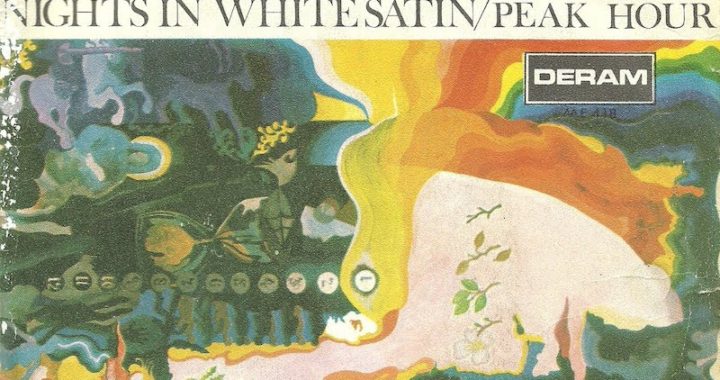“Nights in White Satin” (1967) is one of The Moody Blues’ biggest hits. Most people know it in its “single” version — a bit over 4 minutes in length. But its full-length version, complete with orchestral introduction and interlude by the London Festival Orchestra, is a multi-sectional work of more than 9 minutes – a notably unique art-rock tour de force.
 A chords-first process can work, but there are dangers to avoid. For example, melodic shape can get ignored, and that’s not good. Get the full picture on how to write songs by starting with the chords with “Writing a Song From a Chord Progression.” Purchase it separately, or as part of the 10-eBook Bundle.
A chords-first process can work, but there are dangers to avoid. For example, melodic shape can get ignored, and that’s not good. Get the full picture on how to write songs by starting with the chords with “Writing a Song From a Chord Progression.” Purchase it separately, or as part of the 10-eBook Bundle.
When writing a song like this — especially if you have a view of the expansive orchestration you’d ultimately like to hear in a final version — the question becomes how to write it, with its complexities of formal design.
The answer needs to be: as simply as possible.
A songwriting process is simply a set of vaguely-defined steps that result in a finished song. What you do in those steps really depends on what you’ve just written. So a good songwriting process will be necessarily vague. Or at least vague enough that it allows you to be creative.
A process will often depend on which aspect of a song is driving its creation. For example, if you like working out melodies and chords before deciding what the song “feels” like it’s about (i.e., leaving lyrics as a final step), that’s a kind of process.
You’re likely not writing a full symphonic accompaniment for your songs, but these days you can approximate an accompaniment every bit as complex through the use of computer-aided production. So you have the same challenge that The Moody Blues had (and in fact the same challenge that every classical composer has ever had): how to proceed.
The temptation, since computers are so easy to use, is to get as quickly to a final stage of production as possible. These days, you could be writing a song in the morning and streaming it in its complete version that afternoon.
But I’d make the case for slowing down and developing your song in well-considered stages:
- No matter how complex your final version is, spend time with your song in its embryonic stage. In songwriting, an embryonic stage is: melody, chords and lyrics. Or even simpler: get the melody sounding right on its own. Then:
- Listen to how the melody and lyric pair up. Do they work well together? Does the lyric influence the ups and downs of the melody? Does the melody in any way sound like the natural pulse and tonality of the spoken lyric?
- Focus on how the chords support the melody.
- Imagine your song as a very simply-accompanied melody with lyrics. Don’t worry at all about production or orchestration, at least not yet.
That gives you a song working in a very basic format, and now you’ve got something you can use to expand into something much larger.
So why do it this way? If you’re imagining a fully-involved production with orchestrational ideas and complexities, wouldn’t it make sense to get those ideas working right away? Why simplify the process at all?
The main reason is that good production has a way of making everything sound good, and it can inadvertently mask problems with the core elements of your songs: melodies, chords and lyrics.
Simplifying your songwriting process, particularly for songs that eventually might include key changes, tempo changes, orchestrations, time signature complexities, and so on, means that you’ve got the main core of your song working.
Once that basic bare-bones version of your song sounds right, production and orchestration will sparkle. Rather than propping up a song and masking other problems, production will work as a true partner in making your final version sound just right.
As with most things in songwriting, simplifying as much as possible, especially in those first stages of writing, has a better chance of yielding great results.
 Written by Gary Ewer. Follow Gary on Twitter
Written by Gary Ewer. Follow Gary on Twitter
“How to Harmonize a Melody” is part of the 10-eBook Deluxe Bundle, written by Gary Ewer. If you can “hear” the chords you want, but you just can’t find them, this ebook will take you step-by-step through a process that works.
Right now get a FREE COPY of “Creative Chord Progressions” with your purchase of that bundle package.











